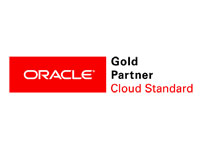Blog
Monthly Planning & Budgeting Cloud Update - July 2018
Oracle updates all Planning & Budgeting Cloud environments (PBCS / EPBCS) monthly to address defects and introduce new features. These updates are delivered automatically on specific dates scheduled by Oracle, during the mandatory daily maintenance window. Keep in mind that while you can configure your daily maintenance window time, you can't change the dates these updates are applied. Oracle announces next month's update dates via newsletter at the end of each month.
July 2018 updates are currently scheduled to be deployed in test environments on Friday, July 6th and to production environments on Friday, July 20th , starting at 10 PM UTC. Any schedule changes are also announced via the newsletter, which is automatically sent to all cloud administrators (keep an eye out for Oracle emails with Enterprise Performance Management Cloud Services in the subject).
These are the highlights of the July 2018 Planning & Budgeting Cloud update:
-
A new version of
EPM Automate
is available with a new command,
copyfilefrominstance
, which allows you to copy files between environments. At the time of this blog post, the documentation was not updated with the new command, so I'll be interested to know if files can be copied across
different identity domains. My thought is probably no due to having to handle different logins. There are also updates to two existing commands:
listfiles
and
deletefile
, which will now list/delete migration snapshots as well as files in the inbox/outbox folders.
- Note: Keeping your EPM Automate version up to date is important ; not only to receive the latest enhancements but also to avoid potential issues with your existing automation scripts (we've seen scripts that have stopped working for using a version that is too old.) Updating EPM Automate is a manual but easy process: you must manually download and re-install it as you did in the original setup.
- Clone and Incremental Export . I don't quite get this update. From what I'm seeing in the DEV pods, splitting the Migration screen into Backups and Exports has only made it so that relational artifacts (such as cell text, etc.) can no longer be exported by themselves , only with a full snapshot backup including data. I've had to migrate cell text by itself before so this would make my job a lot harder depending on the size of the application.
- There is a new "simplified" interface for Data Management , which is just called Data Integration . This interface is supposed to streamline the basic Data Management operations, but it is being referred to as a "preview version only" , so it doesn't appear as it will be fully functional as of yet. No word on if the new interface will eventually replace the existing one yet, but I suspect that might be the case in maybe a year's time?
- A very simple but exciting update: you will no longer need to click the checkmark to select a member under Member Selection !!! Selecting the member will be enough!!!
-
There are several enhancements to
EPBCS Workforce
in this release. Please note that additional work may be needed to fully implement these changes depending on how your environment is set up. Refer to the
Important Information for Current Workforce Customers
section in the July updates link (at the bottom of this document) for specific instructions:
- Updates to what entities and periods benefit and taxes assumptions can be stored in and replicated across, including a new pre-packaged rule to copy assumptions across entities. This minimizes the need to customize artifacts to avoid the burden of setting assumptions for each and every single entity . I would still like to see the ability to set assumptions at the No Entity level out of the box instead of having to replicate data.
- The Benefits and Taxes wizard has a new component type called Custom, which allows you to create custom logic components without having to go through the "backend".
- There are new payment frequency options to define when certain benefits, additional earnings or taxes are paid.
- There are now three options to define salary for TBHs , as opposed to using only entity salary defaults. Direct entry and picking from salary grades are now available.
- There are options now to define start and end date for temporary worker hiring requisitions.
Additional features released in this update include:
- The threshold for certain activity reports for underperforming artifacts has been lowered to 2 seconds. For example Percentage of UI Requests over 2 Seconds .
- The Data Maps card will be moving under the Data Exchange card in the Application cluster.
- Hidden artifacts can be unhidden directly from Financial Reporting Web Studio.
More details including a full list of defects fixed on the July 2018 Planning & Budgeting Cloud update can be found here .
Contact MindStream Analytics
Want to know more about Oracle Budgeting? Please complete the form below and we'll get back to you shortly.
Partner SpotLight

Oracle
Oracle has the most comprehensive suite of integrated, global business applications that enable organizations to make better decisions, reduce cost
